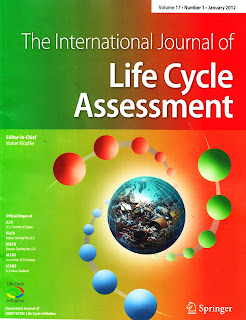
Abstract
Purpose
Life cycle assessment studies on smallholder farms in tropical regions generally use data that is collected at one moment in time, which could hamper assessment of the exact situation. We assessed seasonal differences in greenhouse gas emissions (GHGEs) from Indonesian dairy farms by means of longitudinal observations and evaluated the implications of number of farm visits on the variance of the estimated GHGE per kg milk (GHGEI) for a single farm, and the population mean.
Methods
An LCA study was done on 32 smallholder dairy farms in the Lembang district area, West Java, Indonesia. Farm visits (FVs) were performed every 2 months throughout 1 year: FV1–FV3 (rainy season) and FV4–FV6 (dry season). GHGEs were assessed for all processes up to the farm-gate, including upstream processes (production and transportation of feed, fertiliser, fuel and electricity) and on-farm processes (keeping animals, manure management and forage cultivation). We compared means of GHGE per unit of fat-and-protein-corrected milk (FPCM) produced in the rainy and the dry season. We evaluated the implication of number of farm visits on the variance of the estimated GHGEI, and on the variance of GHGE from different processes.
Results and discussion
GHGEI was higher in the rainy (1.32 kg CO2-eq kg−1 FPCM) than in the dry (0.91 kg CO2-eq kg−1 FPCM) season (P < 0.05). The between farm variance was 0.025 kg CO2-eq kg−1 FPCM in both seasons. The within farm variance in the estimate for the single farm mean decreased from 0.69 (1 visit) to 0.027 (26 visits) kg CO2-eq kg−1 FPCM (rainy season), and from 0.32 to 0.012 kg CO2-eq kg−1 FPCM (dry season). The within farm variance in the estimate for the population mean was 0.02 (rainy) and 0.01 (dry) kg CO2-eq kg−1 FPCM (1 visit), and decreased with an increase in farm visits. Forage cultivation was the main source of between farm variance, enteric fermentation the main source of within farm variance.
The estimated GHGEI was significantly higher in the rainy than in the dry season. The main contribution to variability in GHGEI is due to variation between observations from visits to the same farm. This source of variability can be reduced by increasing the number of visits per farm. Estimates for variation within and between farms enable a more informed decision about the data collection procedure.








